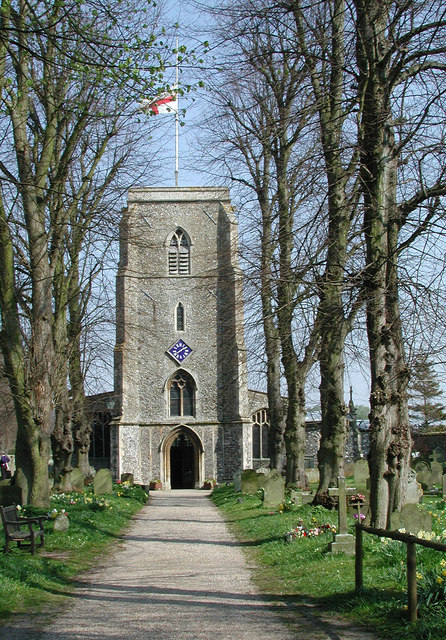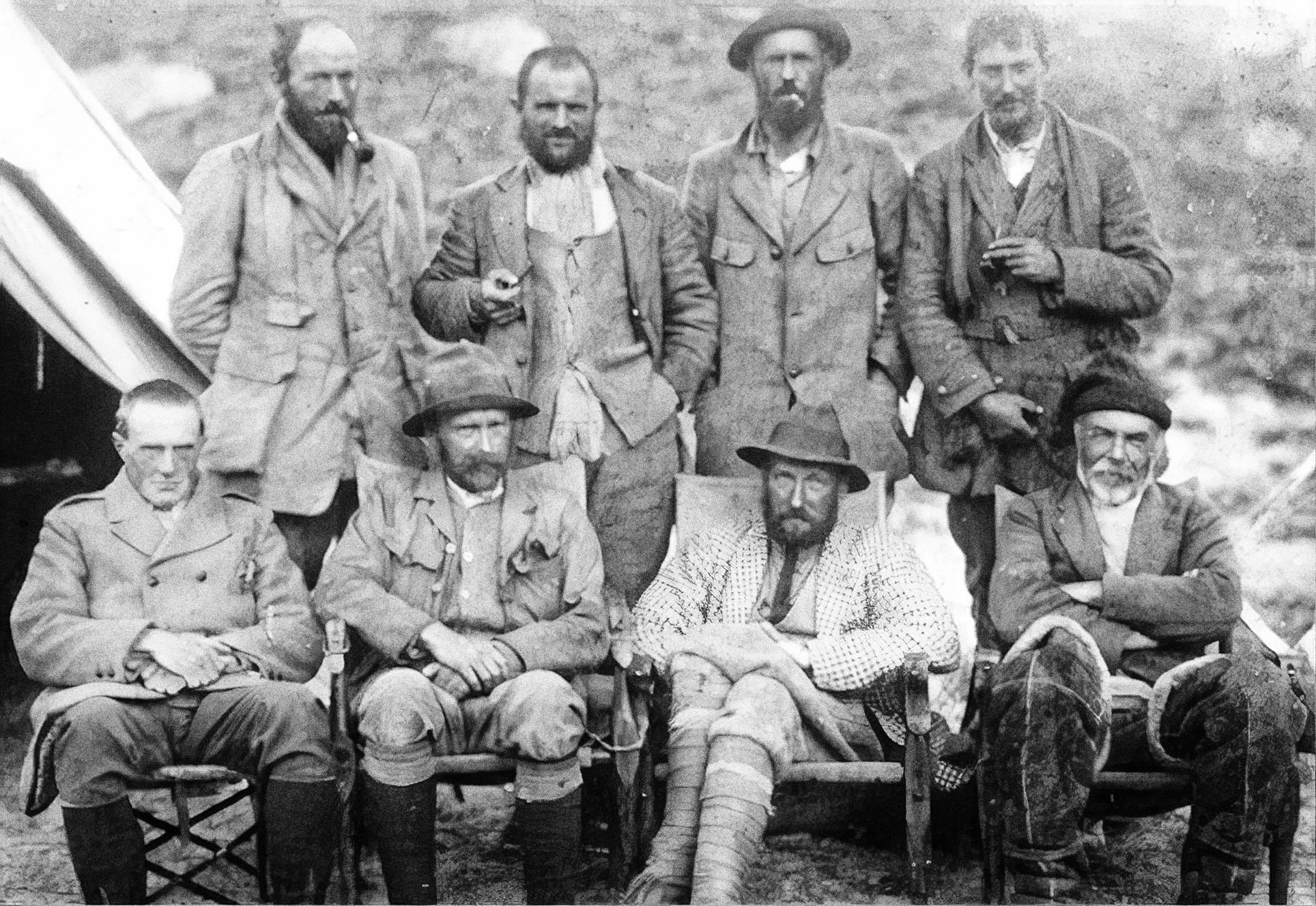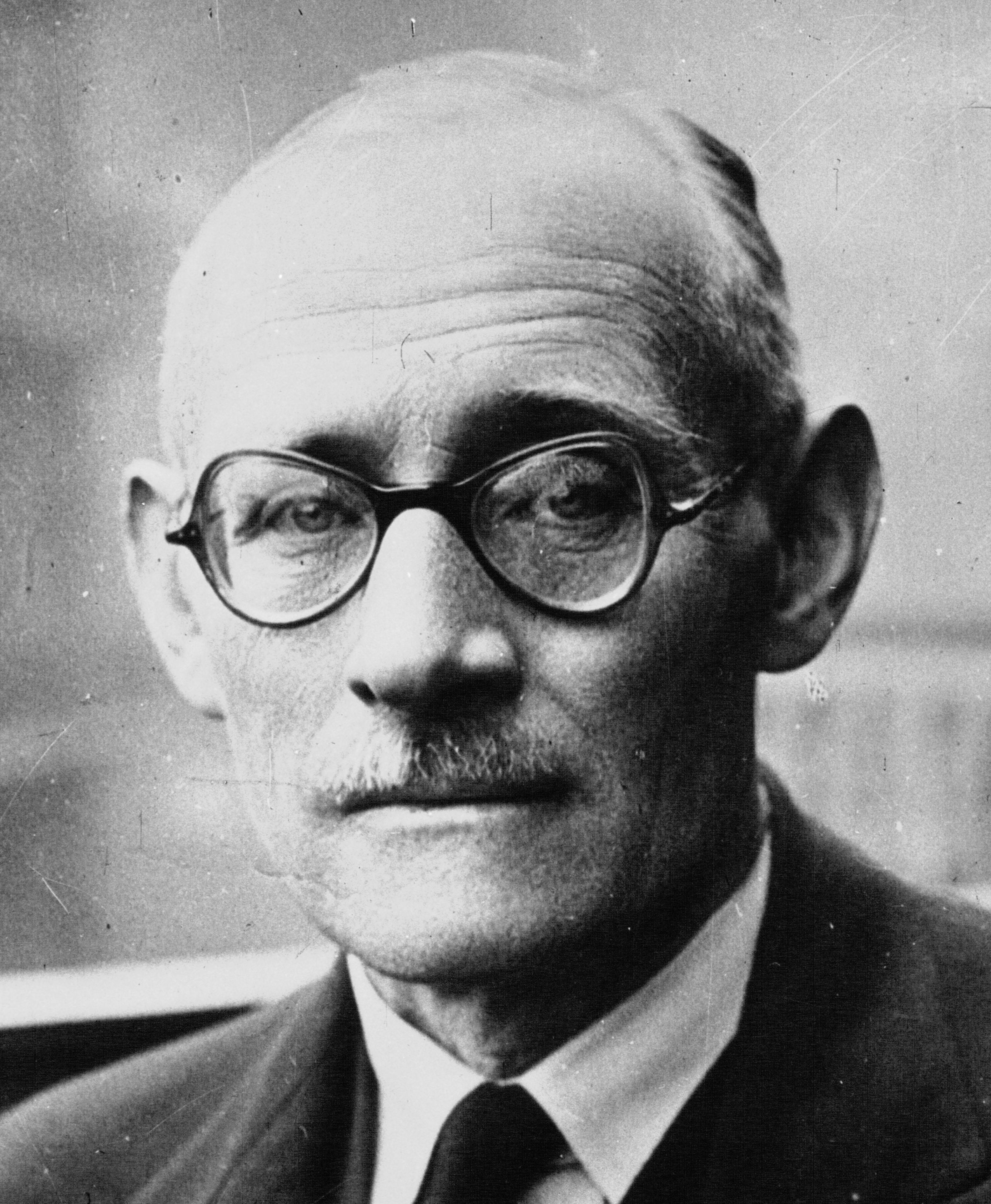|
Percy Wyn-Harris
Sir Percy Wyn-Harris Order of St Michael and St George, KCMG Order of the British Empire, MBE Venerable Order of Saint John, KStJ (24 August 1903 – 25 February 1979) was an English Mountaineering, mountaineer, colonial administrator, and yachtsman. He worked in the Colonial Service in Africa and served as List of colonial governors of the Gambia, Governor of the Gambia from 1949 to 1958. Early life and mountaineering Wyn-Harris was born in Acton, London, Acton, Middlesex on 24 August 1903 as Percy Wynne Harris (he formally changed his name to Percy Wyn-Harris in 1953). He was the son of a company director and was educated at Gresham's School, Holt, Norfolk, Holt, and Gonville and Caius College, Cambridge. As an undergraduate, he was a member of the University Mountaineering Club. In 1925, he made the first ascent without guides of the Brouillard Ridge on Mont Blanc. In 1929, he met mountaineer Eric Shipton and together they climbed the twin peaks of Mount Kenya, making the f ... [...More Info...] [...Related Items...] OR: [Wikipedia] [Google] [Baidu] |
Order Of St Michael And St George
The Most Distinguished Order of Saint Michael and Saint George is a British order of chivalry founded on 28 April 1818 by George IV, George IV, Prince of Wales, while he was acting as prince regent for his father, George III, King George III. It is named in honour of two military saints, Michael (archangel), Michael and Saint George, George. The Order of St Michael and St George was originally awarded to those holding commands or high position in the Mediterranean Sea, Mediterranean territories acquired in the Napoleonic Wars, and was subsequently extended to holders of similar office or position in other territories of the British Empire. It is at present awarded to men and women who hold high office or who render extraordinary or important non-military service to the United Kingdom in a foreign country, and can also be conferred for important or loyal service in relation to foreign and Commonwealth of Nations, Commonwealth affairs. Description The Order includes three class ... [...More Info...] [...Related Items...] OR: [Wikipedia] [Google] [Baidu] |
Holt, Norfolk
Holt is a market town, civil parish and electoral ward in the English county of Norfolk. The town is north of the city of Norwich, west of Cromer and east of King's Lynn. The town has a population of 3,550, rising and including the ward to 3,810 at the 2011 census. Holt is within the area covered by North Norfolk District Council. Holt has a heritage railway station; it is the south-western terminus of the preserved North Norfolk Railway, known as the ''Poppy Line''. History Origins The most likely derivation of the name Holt is from an Anglo-Saxon word for woodland,Brooks, Peter, ''Holt, Georgian Market Town'', (Cromer: Poppyland Publishing, second edition 2001, ) and Holt is located on wooded high ground of the Cromer-Holt ridge at the crossing point of two ancient by-ways and as such was a natural point for a settlement to grow. The town has a mention in the great survey of 1086 known as the Domesday Book. In the survey it is described as a market town and a port with ... [...More Info...] [...Related Items...] OR: [Wikipedia] [Google] [Baidu] |
Pierre Sarr N'Jie
Pierre Sarr N'Jie (17 July 1909 – 11 December 1993) was a Gambian lawyer and politician who served as the Chief Minister of the Gambia from 1961 to 1962. He was the country's first head of government following the declaration of self-rule in 1961. From 1952 until 1977, he was leader of the United Party. He was also a member of the House of Representatives from 1960 to 1972, and ''de facto'' Leader of the Opposition for a period, opposite Dawda Jawara. Early life and government employment N'Jie was born in the Gambia in 1909 to a Wolof Muslim family. His father was a trader who was the nephew of one of the last kings of Saloum, Semu Joof. Thus, through his father, he had Serer blood from the Joof family of Saloum. N'Jie attended Saint Augustine's School in Bathurst and taught there before entering government employment in January 1929. He entered the Judicial Department as an assistant clerk of the courts in 1931, remaining there until July 1943 when he retired on a pensio ... [...More Info...] [...Related Items...] OR: [Wikipedia] [Google] [Baidu] |
1951 Gambian Legislative Election
Legislative elections were held in the Gambia in 1951. They were the first election to feature political parties,Gregg, E. (2003The Rough Guide to the Gambia/ref> as the Democratic Party and the Muslim Congress Party had been founded earlier in the year. Results There were only three elected seats in the Legislative Council at the time. References {{Gambian elections Gambia Parliamentary elections in the Gambia Parliamentary A parliamentary system, or parliamentarian democracy, is a system of democracy, democratic government, governance of a sovereign state, state (or subordinate entity) where the Executive (government), executive derives its democratic legitimacy ... Gambia Colony and Protectorate ... [...More Info...] [...Related Items...] OR: [Wikipedia] [Google] [Baidu] |
Channel Islands
The Channel Islands ( nrf, Îles d'la Manche; french: îles Anglo-Normandes or ''îles de la Manche'') are an archipelago in the English Channel, off the French coast of Normandy. They include two Crown Dependencies: the Bailiwick of Jersey, which is the largest of the islands; and the Bailiwick of Guernsey, consisting of Guernsey, Alderney, Sark, Herm and some smaller islands. They are considered the remnants of the Duchy of Normandy and, although they are not part of the United Kingdom, the UK is responsible for the defence and international relations of the islands. The Crown dependencies are not members of the Commonwealth of Nations, nor have they ever been in the European Union. They have a total population of about , and the bailiwicks' capitals, Saint Helier and Saint Peter Port, have populations of 33,500 and 18,207, respectively. "Channel Islands" is a geographical term, not a political unit. The two bailiwicks have been administered separately since the late ... [...More Info...] [...Related Items...] OR: [Wikipedia] [Google] [Baidu] |
1936 British Mount Everest Expedition
The 1936 British Mount Everest expedition was a complete failure, and raised questions concerning the planning of such expeditions. This was Hugh Ruttledge's second expedition as leader. Heavy snows and an early monsoon forced their retreat on several occasions, and on the final attempt two climbers narrowly survived an avalanche. This was the first expedition in which climbers were able to carry portable radios. 1935 reconnaissance expedition The British had been sending expeditions to Mount Everest since the 1921 reconnaissance but none had managed to reach the summit. These had been planned and financed by the Mount Everest Committee, a joint committee of the Royal Geographical Society and the Alpine Club. The 1935 reconnaissance was a preliminary to an attempt on the summit of Mount Everest in 1936. Led by Eric Shipton, it was a small, low-cost effort which confirmed that the best route from Tibet was up the East Rongbuk Glacier to the North Col. In monsoon conditions in ... [...More Info...] [...Related Items...] OR: [Wikipedia] [Google] [Baidu] |
Andrew Irvine (mountaineer)
Andrew Comyn "Sandy" Irvine (8 April 1902 – 8 June 1924) was an English mountaineer who took part in the 1924 British Everest Expedition, the third British expedition to the world's highest (8,848 m) mountain, Mount Everest. While attempting the first ascent of Mount Everest, he and his climbing partner George Mallory disappeared somewhere high on the mountain's northeast ridge and died. The pair were last sighted only a few hundred metres from the summit, and it is unknown whether the pair reached the summit before they perished. Mallory's body was found in 1999, but Irvine's body and portable camera have never been found. Early life Irvine was born in Birkenhead, Merseyside, one of six children of historian William Fergusson Irvine (1869–1962) and Lilian Davies-Colley (1870–1950). His father's family had Scottish and Welsh roots, while his mother was from an old Cheshire family. He was a cousin of journalist and writer Lyn Irvine, and also of pioneering female s ... [...More Info...] [...Related Items...] OR: [Wikipedia] [Google] [Baidu] |
George Mallory
George Herbert Leigh Mallory (18 June 1886 – 8 or 9 June 1924) was an English mountaineer who took part in the first three British expeditions to Mount Everest in the early 1920s. Born in Cheshire, Mallory became a student at Winchester College, where a teacher recruited him for an excursion in the Alps and he developed a strong natural ability for climbing. After graduating from Magdalene College, Cambridge, he taught at Charterhouse School whilst honing his skills as a climber in the Alps and the English Lake District. He served in the British Army during the First World War and fought at the Somme. After the war, Mallory returned to Charterhouse before resigning to participate in the 1921 British Mount Everest reconnaissance expedition. In 1922, he took part in a second expedition to make the first ascent of the world's highest mountain, in which his team achieved a record altitude of without supplemental oxygen. Once asked by a reporter why he wanted to climb Eve ... [...More Info...] [...Related Items...] OR: [Wikipedia] [Google] [Baidu] |
Edward Felix Norton
Edward Felix Norton (21 February 1884 – 3 November 1954) was a British army officer and mountaineer. Early life He attended Charterhouse School and the Royal Military Academy, Woolwich, and then joined artillery units in India and served in World War I. He had been introduced to mountain climbing at the home in the Alps of his grandfather, Alfred Wills. Career Mountaineering His experience led to his taking part in the British 1922 Everest and 1924 Everest expeditions, reaching high elevations both years. His height of —reached without using oxygen on the Great Couloir route—was a world altitude record which stood for nearly 30 years, only being surpassed during the unsuccessful Swiss expedition of 1952. In 1924, he took over leadership of the expedition when General Charles Granville Bruce fell ill, and Norton was praised for handling affairs in the aftermath of the disappearance of George Mallory and Andrew Irvine. Military career He served at S ... [...More Info...] [...Related Items...] OR: [Wikipedia] [Google] [Baidu] |
1933 British Mount Everest Expedition
The 1933 British Mount Everest expedition was, after the reconnaissance expedition of 1921, and the 1922 and 1924 expeditions, the fourth British expedition to Mount Everest and the third with the intention of making the first ascent. Like the previous expeditions to climb the mountain, the 1933 expedition was unsuccessful, although in two separate attempts Lawrence Wager and Percy Wyn-Harris, and then F. S. Smythe, set an altitude record for climbing without supplemental oxygen that was not broken until Reinhold Messner and Peter Habeler reached the summit of Mount Everest in 1978. During Wager and Wyn-Harris's attempt, the ice-axe belonging to Andrew Irvine, who disappeared with Mallory on the 1924 attempt while going for the summit, was found on the flanks of the north face. Background Following the unsuccessful attempts to climb Mount Everest in 1922 and 1924, the British waited eight years before the 13th Dalai Lama granted permission in August 1932 for the mountain to ... [...More Info...] [...Related Items...] OR: [Wikipedia] [Google] [Baidu] |
Hugh Ruttledge
Hugh Ruttledge (24 October 1884 – 7 November 1961) was an English civil servant and mountaineer who was the leader of two expeditions to Mount Everest in 1933 and 1936. Early life The son of Lt.-Colonel Edward Butler Ruttledge, of the Indian Medical Service, and of his wife Alice Dennison, Ruttledge was educated at schools in Dresden and Lausanne and then at Cheltenham College. In 1903 he matriculated as an exhibitioner at Pembroke College, Cambridge, and in 1906 he took a second-class Honours degree in the Classical Honours tripos.Audrey Salkeld, ''Ruttledge, Hugh (1884–1961), mountaineer'' in ''Oxford Dictionary of National Biography'', Oxford University Press, 2004, online aRuttledge, Hugh (1884–1961)(subscription required) accessed 1 March 2008 India and mountaineering Ruttledge passed the Indian Civil Service examination in 1908 and spent a year at the University of London studying Indian law, history and languages, before going out to India towards the end of 1909. ... [...More Info...] [...Related Items...] OR: [Wikipedia] [Google] [Baidu] |
Mount Kenya
Mount Kenya (Kikuyu: ''Kĩrĩnyaga'', Kamba, ''Ki Nyaa'') is the highest mountain in Kenya and the second-highest in Africa, after Kilimanjaro. The highest peaks of the mountain are Batian (), Nelion () and Point Lenana (). Mount Kenya is located in the former Eastern and Central provinces of Kenya; its peak is now the intersection of Meru, Embu, Laikipia, Kirinyaga, Nyeri and Tharaka Nithi counties, about south of the equator, around north-northeast of the capital Nairobi. Mount Kenya is the source of the name of the Republic of Kenya. Mount Kenya is a volcano created approximately 3 million years after the opening of the East African Rift. Before glaciation, it was high. It was covered by an ice cap for thousands of years. This has resulted in very eroded slopes and numerous valleys radiating from the peak. There are currently 11 small glaciers, which are shrinking rapidly, and may disappear by 2050. The forested slopes are an important source of water for much of Keny ... [...More Info...] [...Related Items...] OR: [Wikipedia] [Google] [Baidu] |





